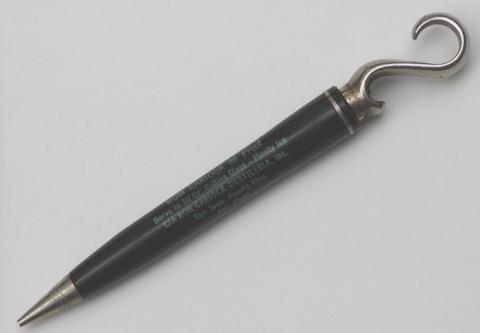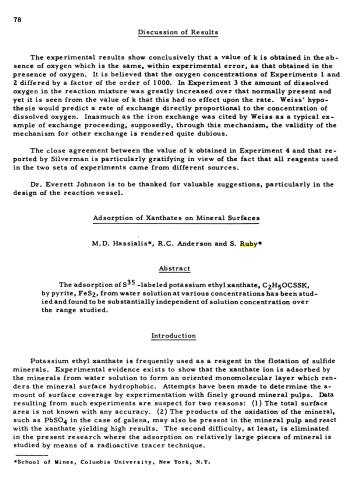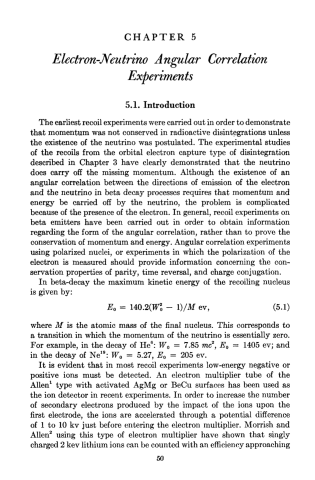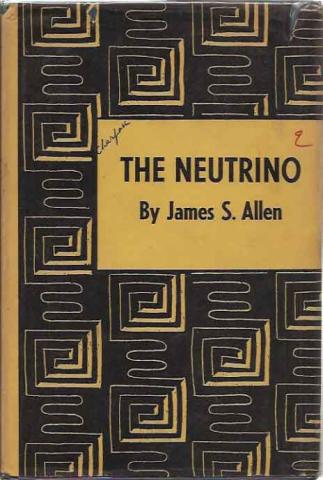Wait a minute! Now I am finding another Dr. Stanley Ruby
Deeper searches for "Dr. Stanley Ruby" are returning some hits related to the Advanced Research Projects Agency.
ARPA was the Pentagon-led program that was established in 1958 in the wake of Sputnik to fund research and development in advanced technologies with military applications. In 1972, the initial D for Defense was added, forming DARPA.
One of the important things it did in this period was to create an information network connecting university labs and government sites. This ARPANET used packet-switching technology that became the basis of the Internet.
Test citation by admin

Hello world
Adsorption of Xanthates on Mineral Surfaces

Paper by Hassialis, Anderson and Ruby reports initial results and describes a future research plan. This Stanley Ruby is not the same as Stanley L. Ruby.
The adsorption of S35 -labeled potassium ethyl xanthate ,C2H5OCSSK , by pyrite, FeS2, from water solution at various concentrations has been studied and found to be substantially independent of solution concentration over the range studied.
Another batch of xanthate of higher specific activity has been prepared . Further experiments are to be run at lower concentrations to determine whether the Langmuir isotherm holds. Two galena, PbS, samples have been prepared and adsorption tests are also to be run with these.
The uranium recovery project was ramping up just as Stan finished his graduate studies
Was there a different Stanley Ruby who was a chemist?
Stan’s employment at Brookhaven is recorded in the lab’s annual and quarterly reports
"CHAPTER 5. Electron-Neutrino Angular Correlation Experiments

The earliest recoil experiments were carried out in order to demonstrate that momentum was not conserved in radioactive disintegrations unless the existence of the neutrino was postulated. The experimental studies of the recoils from the orbital electron capture type of disintegration described in Chapter 3 have clearly demonstrated that the neutrino does carry off the missing momentum. Although the existence of an angular correlation between the directions of emission of the electron and the neutrino in beta decay processes requires that momentum and energy be carried off by the neutrino, the problem is complicated because of the presence of the electron. In general, recoil experiments on beta emitters have been carried out in order to obtain information regarding the form of the angular correlation, rather than to prove the conservation of momentum and energy. Angular correlation experiments using polarized nuclei, or experiments in which the polarization of the electron is measured should provide information concerning the conservation properties of parity, time reversal, and charge conjugation.
The most comprehensive study of the electron-neutrino angular correlation in the decay of He6 has been conducted by Rustad and Ruby.16 The angular correlation was deduced from the shape of distribution curves which represented the probability of an electron of energy W being emitted at an angle Φ with respect to the direction of the recoiling nucleus. Coincidences between the nuclear recoils and the electrons were recorded as a function of Φ and for essentially constant W in order to obtain the distribution curves.
The He6 was produced as in earlier experiments by the Be9 (η, α ) He6 reaction. However, in this case the beryllium was in the form of Be(OH)2 powder. The actual target consisted of 250 grams of this powder placed in an aluminum chamber located near the center of the Brookhaven reactor. Ethyl alcohol vapor was used to sweep the He6 gas from the bombardment chamber into the source volume. The apparatus used in this recoil experiment is illustrated by schematic sketches in Figs. (5.10) and (5.11). The essential elements were a defined source of He6, a collimator and an electron multiplier for detecting recoil nuclei, and a stilbene scintillation spectrometer to measure the direction and energy of the electrons.
The source volume as shown in Fig. (5.11) was defined by a thin aluminum foil and a series of differential pumping diaphragms. Both the scintillation spectrometer and the source volume were enclosed in a bell jar which was evacuated in order to prevent the collapse of the thin covering of the source volume. As a result of the differential pumping, approximately ninety percent of the radioactive gas was removed through the gap separating the two sets of diaphragms. Counting measurements with the potential of the repelling grid, adjusted to shut off the ions coming from the source volume, indicated that the pressure of the He6 in the source volume was at least one hundred times that in the multiplier region. As a result of the differential pumping, the effective source volume, although sharply defined by the aluminum foil, was defined somewhat less sharply by the diaphragms.
The results of the two electron recoil ion angular correlation measurements are shown in Figs. (5.12) and (5.13). In the first of these two measurements the scintillation counter was adjusted to accept electrons within the energy range 2.5 to 4.0 mc, and in the second the energy range from 4.5 to 5.5 mc2 was used. It is evident that in both experiments the data points were very close to the curve expected for the T interaction. A third set of measurements made near the upper end of the beta-spectrum was in good agreement with the curves obtained at lower electron energies.
Although the experimental results indicated that the beta-decay interaction for the He6 —> Li6 transition is dominated by the tensor invariant, the data were further analyzed in an attempt to determine the possible presence of a small amount of the axial vector interaction. If we assume that the Fierz interference term is not zero, the angular correlation factor of equation (4.3) can now be expressed as: [equations]
The quantity b (pre-parity) has been defined in (4.4). In Fig. (5.14) the angular correlation factor has been plotted as a function of X for a mean electron energy 2.0 Mev. The coefficients and respectively, were derived from the angular correlation curves cor- responding to the electron energy ranges of 2.5 to 4.0 and 4.5 to 5.5 [eq] The authors conclude that their results indicate that [eq], which again shows that the tensor is the predominant interaction in the He6 beta-decay. If we assume that the Fierz interference term is negligible, then the mean of their experimental values of the angular correlation would appear to be [eq] This result is to be compared with [eq] for a pure tensor interaction, and [eq] for a pure axial vector interaction.
The Neutrino

A complete treatise on the subject of the neutrino includes interpretation of experimental results in terms of existing theories on this nuclear particle. It incorporates material on post-parity experiments which appeared following the Lee and Yang discoveries in 1956 concerning parity non-conservation in weak interactions. Originally published in 1958.